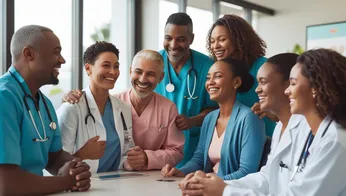Merchant Rewards Programs: Easy Ways to Boost Customer Loyalty
Merchant rewards programs offer businesses a powerful way to enhance customer loyalty and engagement. By providing personalized incentives and exclusive perks, these programs foster long-term relationships and drive repeat purchases.
On this page
Customer loyalty is a key driver of long-term business growth. To foster loyalty and encourage repeat business, many businesses turn to merchant rewards programs. These initiatives reward customers with points, discounts, or exclusive perks, offering clear value and enhancing their connection with the brand.
Merchant rewards programs help businesses build relationships by making customers feel valued and appreciated. When shoppers receive tailored rewards, they are more likely to return, increasing their lifetime value. For businesses, these programs provide opportunities to boost sales and gain deeper insights into customer preferences.
From small businesses to global brands, rewards programs have proven their impact. A local bakery offering discounts after repeat purchases or a large retailer running a points-based system both highlight the effectiveness of these strategies in retaining customers.
Understanding the benefits of merchant rewards programs allows businesses to create systems that foster loyalty, boost engagement, and support sustainable growth.
Did you know? 80% of consumers say they’re more likely to do business with a company that offers personalized experiences. So, let’s get started and learn how merchant rewards programs can help you keep your customers happy and boost your business!
What are merchant rewards programs?
Merchant rewards programs are loyalty programs offered by businesses to incentivize customers to make repeat purchases. These programs reward customers for their loyalty and encourage them to choose a particular merchant over competitors.
Merchant rewards programs typically work by offering points or discounts for every purchase made. These points can then be redeemed for future purchases or other rewards.
These programs are beneficial for merchants as they can help increase customer retention, encourage higher spending, and provide valuable customer data for marketing purposes.
Overall, merchant rewards programs are a valuable tool for businesses looking to build customer loyalty and increase sales.
Key components of merchant rewards programs
Merchant rewards programs typically consist of several key components:
- Membership or loyalty card: Sometimes, customers may receive a membership card in the form of a plastic card or a card created in the digital space, which they can use to track the accumulation of points and access additional bonuses for easy redemption.
- Tiered reward levels: The variations in the number of memberships could be because some offer the options of the number of times or amount spent by a certain customer, and the more a customer spends; he gets to the next level to enjoy more privileges.
- Special promotions and offers: Special promotions or bonus points or lucky bouts are provided by the merchants to encourage purchases or to respond to particular trends, giving people a feeling of fun and a distinct segment kind of affair.
- Personalized offers: A few examples of applying customer data include: increasing the relevance of the offers or rewards aimed directly at the customer by referencing a particular trip and the preferences shown by this customer during the previous trip.
- Mobile app or online portal: Most of them provide their customers with account login information where they apply point tracking for its convenience in addition to rewards and other content.
- Communication channels: Finally, merchants regularly inform the customers about the rewards they have or new offers available, and this is done through emails, SMS, or notifications within the application where necessary so as to keep the customer engaged.
- Customer support: A separate customer support mechanism makes it possible for customers to contact the company for clarification on anything regarding the rewards program or to even report any issue they may come across while using the program.
- Feedback mechanism: Sometimes, even merchants require customers to give their feedback on the rewards program that is likely to be modified to rectify areas perceived as lacking by the customers, further showing that the program is progressive.
Benefits of merchant rewards programs
Merchant rewards programs offer several benefits to businesses:
- Increased customer loyalty and retention: Since incentive programs aim to increase ticket sales, these programs are useful in building the long-term loyalty of such customers.
- Improved customer engagement and satisfaction: As we know, rewards programs are a nice addition for organizations as they make options for customers not just a simple purchasing process but make it more of an enjoyable experience.
- Boost in sales and revenue: One of the major benefits realized from the use of rewards programs is that they would help persuade customers to spend more or to buy more products to be able to claim their rewards, hence, more sales and more revenues.
- Competitive advantage in the market: Having a reward program can create a gap between a business and competitors since all customers like to get something in return for their purchase.
- Data insights and marketing opportunities: Money-saving programs also offer retailers a wealth of information on customer habits and interests arising from their use of the cards, information that can be leveraged to better target promotional campaigns and offers.
- Word-of-mouth and referral marketing: Customer satisfaction helps gain new consumers in that happy consumers spread the word about the product to other consumers, therefore becoming a selling point in its own right.
Types of merchant rewards programs
Merchant rewards programs can help businesses keep customers happy and encourage them to shop more often. Here’s a simple guide to different types of merchant rewards programs:
1. Loyalty points programs
In loyalty points programs, customers earn points every time they make a purchase. They can collect these points and later use them for discounts, free items, or other rewards. For example, if you earn 1 point for every dollar spent, you can save up those points and trade them in for something special. This makes customers want to keep coming back to earn more points.
2. Discount programs
Discount programs are those that allow the customer to be provided with a specific percentage or quantity that they can be allowed to deduct from the total amount of money they are attending to spend. These may include things like end-of-year sales, introducing new membership sales, and first-time buyer sales. For instance, a store may give a free cup of coffee to anyone who purchases a pastry from the store. Such programs are simple to comprehend and prompt instant acquisition of the good or service by new consumers, as well as re-purchasing by prior users.
3. Cashback programs
Cashback programs are something that provides customers with a part of what they spent back after they have made the purchase. It could be cash, store credit, or a gift card as a form of payment, depending on the individual’s preference. For instance, if a business or an organization provides 5% cashback on all purchases, the purchased amount can be paid back anytime in the future. It may be cut across as something that customers appreciate since they understand the kind of benefit that they are receiving, and it is given to them right there and then.
4. Referral programs
Referral programs reward customers for bringing in new shoppers. Customers get benefits like discounts, points, or cash for each new person they refer who makes a purchase. For example, you might get $10 off your next purchase for every friend you refer who buys something. This helps businesses grow by using word-of-mouth recommendations.
Enhancing this approach, Loyalife’s Loyalty Engine enables businesses to create customizable referral programs that seamlessly integrate with existing systems. By utilizing Loyalife’s platform, companies can offer a wide array of rewards, including gift cards, travel options, and merchandise, to incentivize referrals and boost customer engagement.
5. Tiered rewards programs
Tiered rewards programs offer different rewards based on how much a customer spends. The more you spend, the higher your tier and the better your rewards. For instance, there could be Bronze, Silver and Gold levels, with Gold members getting the best perks. This encourages customers to spend more to reach higher tiers and get better rewards.
6. Partnership programs
Partnership programs involve two businesses teaming up to offer joint rewards to customers. For example, a coffee shop might partner with a bookstore to give customers discounts at the bookstore when they buy coffee regularly. These programs add extra value for customers and help both businesses reach new people.
How to create and run a merchant rewards program
Creating a merchant rewards program involves careful planning, strategic design, and consistent management to ensure it meets both your business goals and customer expectations. Below is a detailed guide to help you create and run an effective rewards program:
1. Define your goals
Start by identifying what you want to achieve. Goals can range from increasing customer retention and repeat purchases to enhancing customer satisfaction and collecting valuable data insights. Clear objectives will guide the program's structure and ensure alignment with your business strategy.
For example, if your goal is to increase the frequency of customer visits, consider a points-based program where customers earn rewards for every purchase. If the focus is on boosting average order value, a tiered program offering exclusive perks for higher spending might work better.
2. Understand your customers
A successful rewards program begins with a deep understanding of your customer base. Analyze data on purchase history, preferences, and engagement patterns. Conduct surveys or use customer feedback to identify what motivates them.
For instance, do your customers value discounts, free products, or exclusive access to new collections? Knowing this will help you design rewards that truly resonate with their needs.
3. Choose the right program type
Select a rewards structure that suits your business model and customer preferences. Here are a few common types:
- Points-Based Programs: Customers earn points for every purchase, which can be redeemed for discounts or products.
- Tiered Programs: Customers unlock better rewards as they spend more, encouraging higher engagement.
- Cashback Programs: Customers receive a percentage of their purchase back, either as cash or store credit.
- Subscription Models: Customers pay a recurring fee to access exclusive benefits, such as free shipping or special discounts.
Consider your industry and target audience when choosing the program type. For example, a coffee shop might benefit from a simple points-based system, while a luxury retailer could use a tiered model to reward high spenders.
4. Design meaningful rewards
Ensure the rewards provide real value to your customers. Avoid generic incentives and focus on benefits that align with your brand and customer expectations. Examples include:
- Discounts on future purchases.
- Free products or services after a set number of transactions.
- Early access to sales or new arrivals.
- Invitations to exclusive events.
The key is to make customers feel appreciated while motivating them to engage more with your business.
5. Make the program easy to use
A complicated enrollment or redemption process can discourage participation. Simplify the program by:
- Offering an easy signup process online or in-store.
- Providing customers with clear instructions on earning and redeeming rewards.
- Using digital tools like mobile apps or loyalty cards to track progress and points.
For instance, a mobile app can display a customer's points balance, available rewards, and offers in real time, enhancing their experience and encouraging continued engagement.
6. Promote your program
Effectively communicating the program's benefits is critical for driving participation. Use multiple channels to spread the word:
- Announce the program on your website and social media platforms.
- Send promotional emails to your existing customers.
- Include details about the program on receipts or in-store signage.
Highlight specific benefits, such as “Earn points on every purchase” or “Join today for a free welcome reward,” to attract attention.
7. Use technology to manage the program
Invest in a loyalty management platform to handle the complexities of the program. These tools can automate tasks like tracking points, managing tiers, and analyzing customer behavior. Advanced platforms also allow businesses to send personalized offers and reminders based on customer activity.
For example, automated email campaigns can inform customers about nearing rewards or new offers tailored to their preferences.
8. Monitor and optimize performance
Regularly review the program’s performance to ensure it’s meeting your goals. Key metrics to track include:
- Enrollment rates: How many customers are signing up?
- Redemption rates: Are customers actively using their rewards?
- Customer retention: Has the program increased repeat business?
Use this data to refine your program. For instance, if redemption rates are low, consider offering more appealing rewards or simplifying the redemption process.
9. Engage customers continuously
A rewards program isn’t a one-and-done effort. Keep customers engaged by:
- Regularly updating rewards and adding seasonal offers.
- Sending personalized communications based on their preferences and activity.
- Creating exclusive promotions for loyalty members.
For instance, offer double points during holidays or exclusive discounts for members on their birthdays.
10. Build trust with transparency and security
Ensure your program operates transparently and protects customer data. Clearly communicate terms and conditions and reassure customers that their personal information is secure. This trust is essential for maintaining long-term loyalty.
By following these steps, you can create a merchant rewards program that not only strengthens customer relationships but also drives sustainable business growth. With the right strategy and tools, your program can become a powerful asset for your brand.
Loyalife’s end-to-end loyalty system for merchants
Loyalife’s transforms how merchants run rewards programs. With a highly customizable loyalty engine, businesses can design engaging programs tailored to their needs. Advanced analytics deliver deep insights into customer behavior, empowering smarter decisions that drive engagement and loyalty.
Seamless API integrations connect effortlessly with existing CRMs and marketing tools, streamlining program management for maximum efficiency. Loyalife’s expansive rewards marketplace enhances customer satisfaction by offering diverse redemption options, ensuring every interaction adds value.
Want to revolutionize your rewards program? Partner with Loyalife to create a loyalty experience that boosts customer retention and drives business growth.
Conclusion
Merchant rewards programs are a powerful tool for any business looking to build strong relationships with its customers. By understanding what these programs are and the key components that make them effective, businesses can create rewarding experiences that keep customers coming back.
The benefits of merchant rewards programs are clear: they boost customer loyalty, increase sales, and help businesses grow. With various types of rewards programs to choose from, each business can find the one that best fits their needs and goals.
The case study shows a real-life example of how a well-designed rewards program can lead to great success. By applying these insights, any business can enhance its customer engagement and drive long-term growth.
In short, merchant rewards programs are an essential strategy for any business aiming to thrive in today’s competitive market. Start planning your rewards program today and watch your customer satisfaction and business success soar!
FAQ's
1. Are Merchant Rewards Programs only for retail businesses?
No, these programs can be implemented across industries, including hospitality, e-commerce, and services, to encourage customer loyalty and repeat engagement.
2. How do Merchant Rewards Programs increase customer retention?
By rewarding loyalty, these programs create value for customers, fostering a sense of appreciation and encouraging them to continue shopping with the same merchant.
3. What features make a Merchant Rewards Program effective?
An effective program includes personalized rewards, easy enrollment, seamless redemption options, and ongoing engagement strategies like exclusive offers or tiered benefits.
4. What are some examples of successful Merchant Rewards Programs?
Examples include Starbucks Rewards for frequent coffee buyers and local stores offering points systems redeemable for discounts or exclusive items.
5. How can businesses optimize Merchant Rewards Programs?
Businesses can optimize by personalizing rewards, leveraging customer data for targeted offers, and integrating multichannel experiences to keep customers engaged and loyal.
6. How do Merchant Rewards Programs benefit customers?
Customers benefit by earning rewards for their regular purchases, such as discounts, cashback, or free products, making their shopping experience more valuable and engaging.
7. Can small businesses implement Merchant Rewards Programs?
Yes, small businesses can create tailored merchant rewards programs to build customer loyalty and drive repeat purchases without requiring a large budget.









